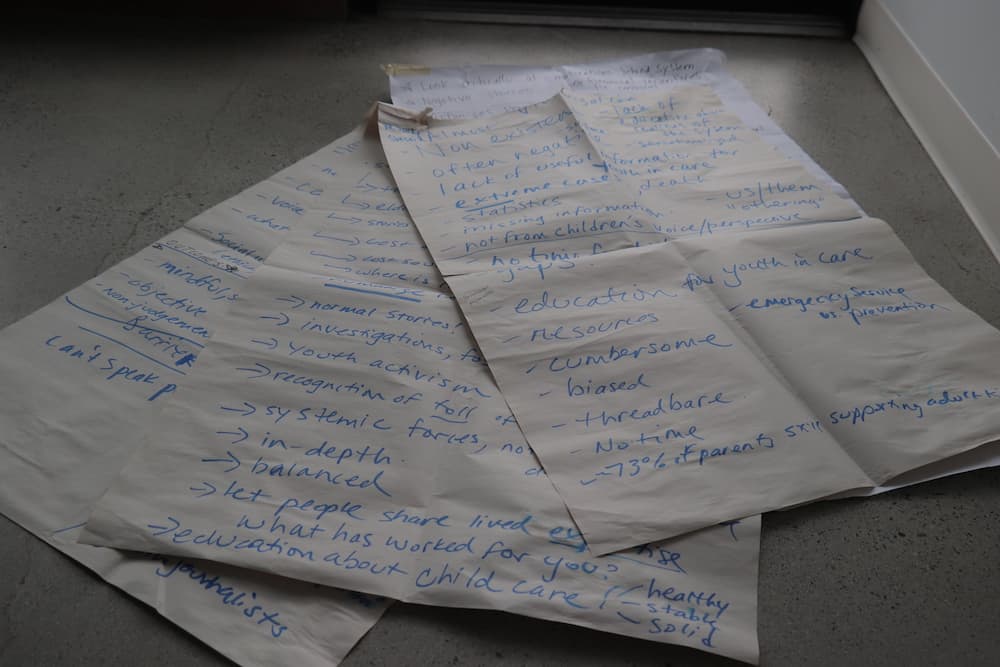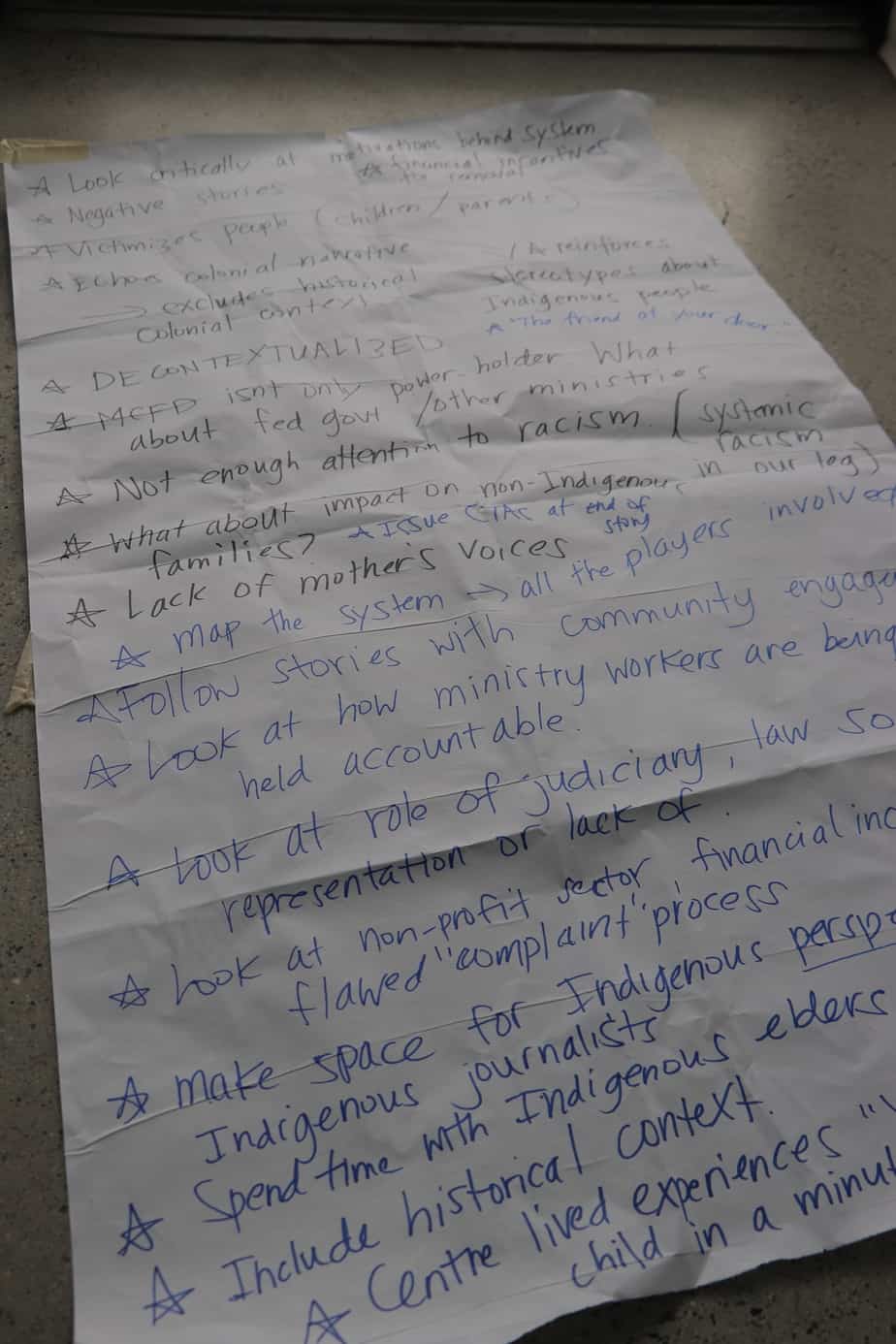
On March 8, more than 20 youth workers, parents, advocates, politicians and concerned community members came together to share their perspectives on how journalists can improve coverage of child-welfare issues.
It was an inspiring gathering fuelled by an extraordinary amount of knowledge and expertise. Many in the room shared difficult personal stories of their experiences with the child-welfare system, and offered generous feedback on how media coverage can improve.
Based on nearly five pages of flip-chart notes, here’s a summary of what we heard.
Currently, media coverage of the child welfare system is:
- Almost non-existent.
- Often negative, focusing on extreme cases with tragic outcomes.
- Paints youth, Indigenous families and parents as damaged or broken. This serves to reinforce negative stereotypes and perpetuate a narrative of us versus them.
- Reported out of context. What’s the backstory? How did we get here? What are the systemic forces at play, like colonization and racism?
- Reinforces an assumed power dynamic. Coverage portrays child-welfare government agencies and their employees as holding all of the power, and everyone else as victims.
Ideally, media coverage of the child welfare system would:
- Make space for perspectives of youth, parents and Indigenous people. In other words, media coverage would centre lived experience and lessons learned. That means hiring more former youth in care and Indigenous journalists to research and report on the child-welfare system.
- Destigmatize experience with the system. Show that it can happen to anyone by sharing perspectives from a diverse range of families affected by the system.
- Humanize stories by sharing the full context of who they are and how they got here.
- Educate the public on the realities of the system and provide resources for people navigating it. Offer information for youth and parents they can use, like where to access services, how to cope with stress, or how to support youth on the fetal alcohol spectrum. Educating the public includes creating and sharing best reporting practices, so people interviewed by media are clear on their rights and the possible implications of sharing their stories publicly.
- Show what’s working well, too. In addition to scrutinizing what’s wrong with the system, media should also publish stories that feature positive initiatives that uplift and show us a way out of crisis.

Where do I start?
Here are a few story ideas and angles suggested by the community:
- Investigate the role and cost of child-welfare courts
- Investigate the cost of prevention compared to emergency stopgap measures
- Investigate the resources required to keep kids with their families, and compare this to the cost of child apprehensions
- Tell stories of youth taking action toward improving child welfare
- Dig into the barriers youth in care face in moving forward with their lives after care
- Map the system and all players involved
- Look at how ministry workers are held to account
- Dig into the complaint process, and expose how it may be flawed
Get involved
Reporter Brielle Morgan with The Discourse is currently leading Spotlight: Child Welfare, a collaborative journalism project that aims to deepen and improve reporting on B.C.’s child welfare system. The team includes journalists reporting for The Discourse, The Tyee, Star Metro, Black Press, the National Observer, the Vancouver Courier and The Runner.
There are many ways to get involved. Currently, the team’sasking for feedback from parents whose children were removed within the past five years, foster parents, extended-family caregivers, and support workers on how families are being supported — or not.
You can follow Spotlight: Child Welfare on Facebook and on Twitter. Reach out to the team for more information on how to get involved. [end]
Editor’s note, March 26, 2019: An earlier version of this story featured different images from the event.



